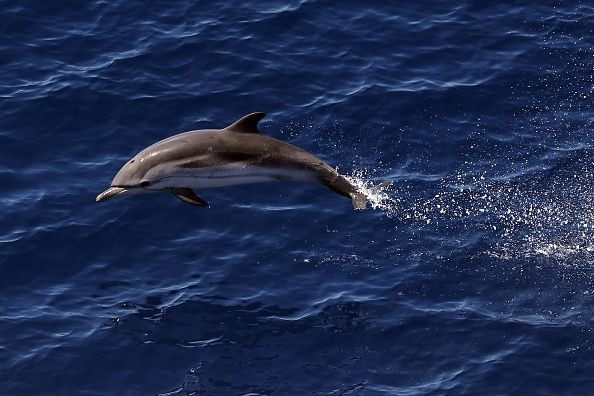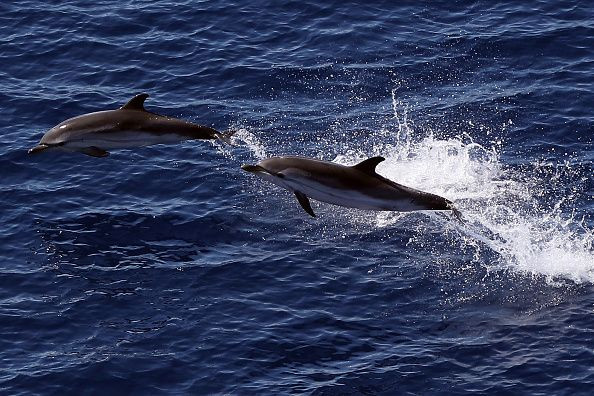Dolphins Are Decapitating Their Prey In Rare Behavior, Say Marine Biologists

Marine biologists discovered that some of the Gulf’s common bottlenose dolphins are decapitating marine catfish. The behavior is reportedly rare. Biologist Errol Ronje co-authored a report about the phenomenon published July 12. The report talked about the tactics that some dolphins used to consume their prey, namely catfish.
Though dolphins typically devoured their prey intact, Dolphins sometimes engaged in "division of labor" to hold and eat mullet. A study conducted in 2009 showed that Indo-Pacific bottlenose dolphins followed "recipes" for their cuttlefish prey.
READ: Hundreds Of Whales Die In New Zealand After Biggest Mass Stranding Recorded
The Gulf dolphins’ eating practices, which allowed them to evade the catfish’s skull spines, apparently proved to be rare. It took scientists decades to study the dolphins they researched for the formal study.
"We just didn’t have enough behaviors until 2015, and even at this point, with only 13 sightings to report, it’s still pretty slim," said Ronje, a fisheries biologist with the NOAA's National Marine Fisheries Service, according to PLOS ONE.
Ronje and his colleagues were surveying dolphins off Mississippi’s Petit Bois Island in 2015 when they encountered a bizarre sight: a half-kilometer trail of severed catfish heads bobbing in the wake of a dolphin pod.
The biologists gathered seven of the fish heads, which were so freshly decapitated that the pectoral fins and eyes and were still active. As their vessel voyaged back to land, the severed heads started making noise, which Ronje described as "gurgling grunts."
READ: Are Fishnets Dangerous For Marine Mammals? More Than 380,000 Die Every Year Due To Entanglements
"The poor little catfish heads," Ronje told National Geographic Tuesday. "Your heart goes out to them, but there’s really nothing you can do for them. It wasn’t a random tearing apart of the fish," he said.
He added, "It was almost like [the dolphins] had cut off the posterior.”
Ronje noted that the dolphins have a reason for decapitating their prey.
"Catfish have a pretty sophisticated defensive skull structure: They have three very sharp, serrated, rigid spines that are fitted into sockets and they can lock and unlock this spine at will," he said.
According to the report, "Bottlenose dolphins demonstrate a variety of foraging behaviors in pursuit of a wide range of prey, including fish, cephalopods and crustaceans."
The report likened the feeding behavior of the dolphins to that of killer whales who tear their prey apart.
"The general prey consumption process is similar among odontocetes with the exception of some killer whales (Orcinus orca) that often tear their large prey apart," the report read. "Odontocetes generally use a ram or suction feeding approach to capture fish prey between their jaws that have pointed, homodont teeth, and use their tongues to orient the fish to be swallowed whole, head-first, without mastication or significant prey handling."
In spite of their findings, Ronje said that not all dolphins are as careful. The researchers studied records of dolphins and found 38 records of dolphins that had injured themselves from eating catfish spines. One dead dolphin’s carcass amassed 17 catfish spines, some of which ruptured the digestive tract.
"He was in a bad way," Ronje said.

© Copyright IBTimes 2025. All rights reserved.





















